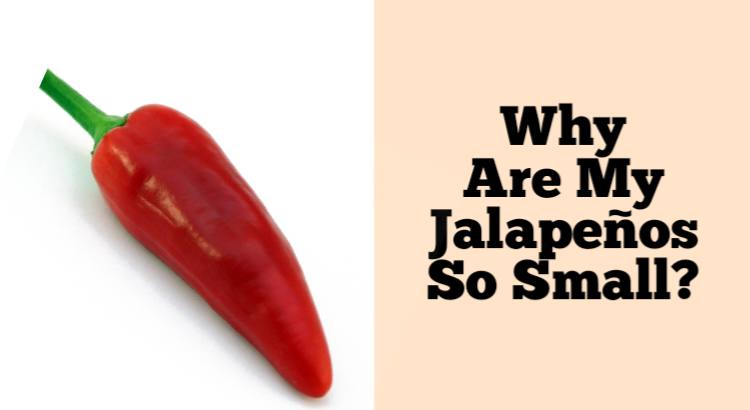Jalapenos are the favorite peppers to grow by some gardeners. They’re pretty easy to grow, and you can get a lot of them from each plant.
However, some people have trouble getting their jalapeno plants to produce any peppers at all or even getting good-sized peppers. So what causes these problems?
Why Are My Jalapenos So Small?
The weather and your soil
The weather is a factor. The amount of water you get and the soil pH are also factors. While you can’t control these things entirely, they can help you better understand why your jalapenos are so small.
For example, if there was very little rain during the winter, then it’s possible that there wasn’t enough water for your plants to grow properly and produce big peppers from small ones.
If it’s been unusually hot where you live or if there has been a drought for months, then this could also be affecting how big your peppers get.
The quality of your soil will have an impact on how healthy the plants are overall–and therefore how large they grow as well as affecting their ability to take in nutrients through their roots (which helps them grow).
Too much water
If you’re growing your jalapeno plants in a too-wet environment, it could be causing them to grow tiny peppers.
Too much water can cause the plant to become waterlogged and more prone to disease and insect infestation.
It also makes it easier for root rot (a fungal infection) to set in, which will stunt growth and cause your pepper plants’ leaves to turn yellow or brown.
Too much fertilizer or too little fertilizer
If you’re seeing smaller peppers than usual, it’s possible that your plant is suffering from either too much or too little fertilizer.
If you’ve been using an organic fertilizer like compost or manure and are applying it regularly, the excess may be causing your plants to produce more foliage than fruit.
Similarly, if you haven’t fertilized at all or if you’ve added too little fertilizer your plants will produce less fruit than normal.
Fertilizer should be applied at the beginning of the growing season for best results; once a month during months with even numbers (April through October) is ideal for most pepper varieties.
The amount of fertilizer needed depends on how much nitrogen is already present in your soil and what type of soil you have: sandy soils need less nitrogen than clay soils do.
You let your peppers get too crowded
You planted too many jalapenos in the same pot. This happens when you don’t space out your seeds.
You should have separated them, but if you didn’t and this is what happened, it’s not a big deal.
You can grow several peppers together in a container or bucket, as long as there’s enough soil for each one to thrive in.
If you do this and plant them around mid-May to early June, they’ll be ready to harvest by September or October with just the right amount of heat and water (just make sure they’re not drowning).
Your variety is naturally small
When growing jalapenos or other peppers, you can’t always expect huge pepper
While it is true that some peppers are naturally small, they’re still delicious.
There are many varieties of peppers that grow extremely well in small spaces and produce beautiful, flavorful fruit without taking over your garden.
So don’t fret if your jalapenos look like they’ve never seen the outside world, you can still eat them.
Conclusion
Growing jalapeno peppers is a lot of work, but the rewards are so worth it. There are many factors that can affect the fruit size but when the plant is growing healthy it can produce a lot of peppers of good sizes.

